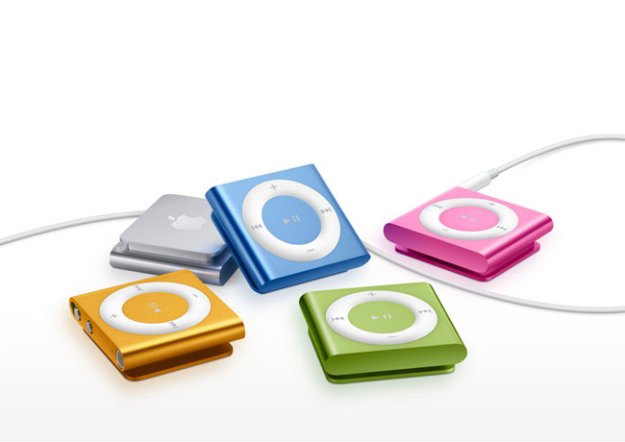
With the iPhone 5 on the horizon, the sun may soon set on two of Apple’s long-time staples, the iPod shuffle and iPod classic.
According to TUAW, an unnamed source claims Apple will discontinue the two iPods, with the space being filled by the iPod nano and iPod touch. As Apple watchers may have noticed, we’ve heard a lot of about the next iPhone(s), but almost nothing about updates iPod line, save some rumblings about the release of a white iPod touch.
Speculation about the death of the two iPod offerings are supported by Apple’s vague claims of a “product transition” this year, which the company mentioned during its most recent earnings call.
While relatively few customers may mourn the death of the shuffle and classic iPods, the move appears to make business sense. The iPod shuffle is really nothing more than an iPod nano, without the convenient touchscreen. And the classic, which is 10-years-old this year, does little more than play music – something the iPod touch does just as well, plus the added benefit of being able to download games and other apps.
Then there’s the rise of the iPhone, which satisfies both the need for an MP3 player and a smartphone. If Apple offers a less-expensive iPhone this year, either in the form of a new iPhone 4S or a price-reduced iPhone 4, then its likely even more customers will be swayed in that direction, away from a low-end iPod option.
Of course, the primary downside to the elimination of the shuffle and classic is that the least expensive new iPod would jump from $49 (shuffle) to $149 (nano). Unless, of course, Apple drops the price on the nano, but nobody’s saying that, at least not in the tech press, so we can’t even guess that that’s a possibility.
What do you think, should Apple continue to produce the iPod shuffle and classic, or has their time past?
Editors' Recommendations
- Best iPhone 15 deals: How to get Apple’s latest iPhone for free
- How to fix iMessage activation errors on your iPhone
- How to watch Apple’s big iPad event on May 7
- Are you having iPhone alarm problems? A fix is coming soon
- Best iPhone 14 deals: Unlocked and refurbished


